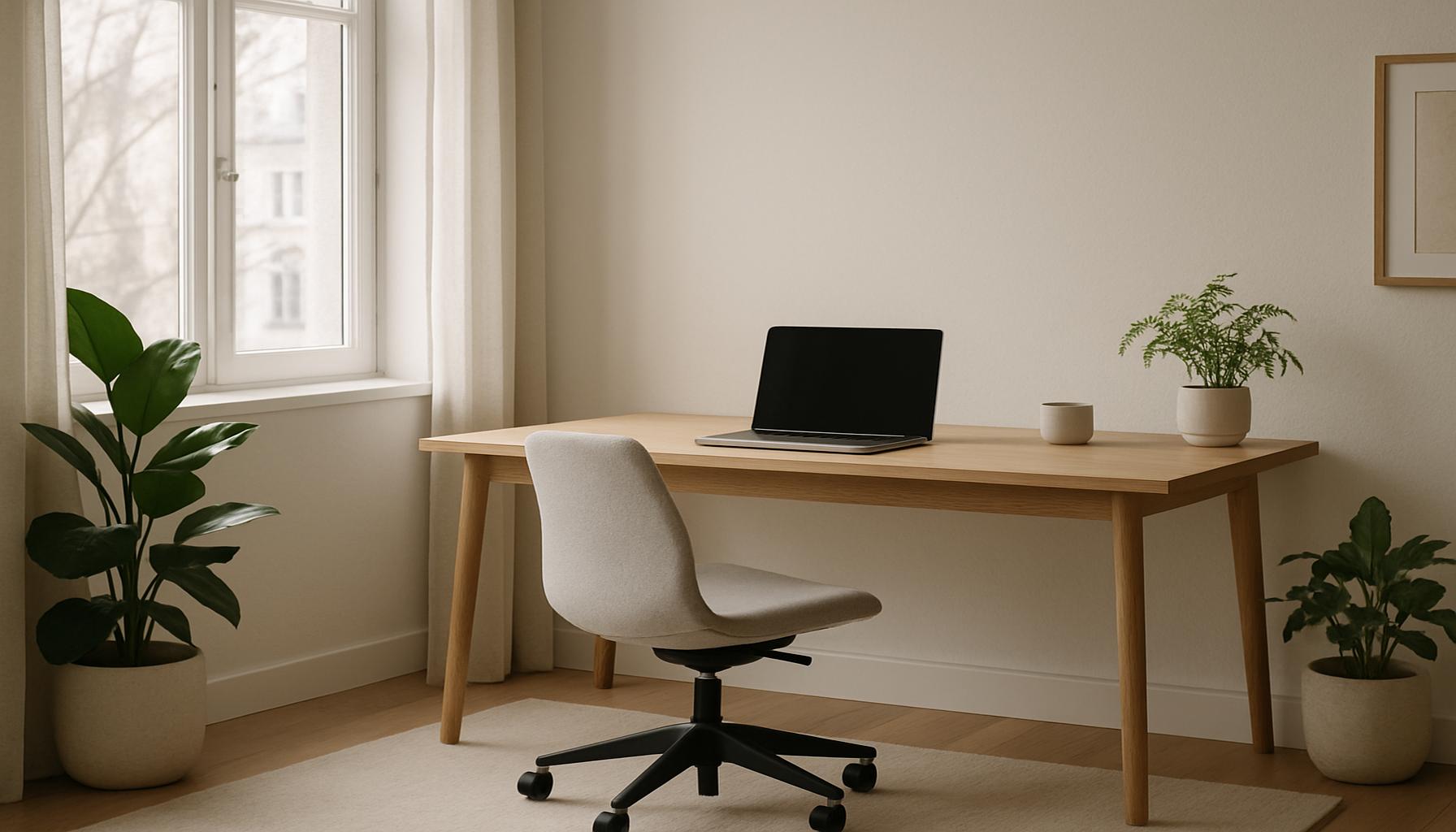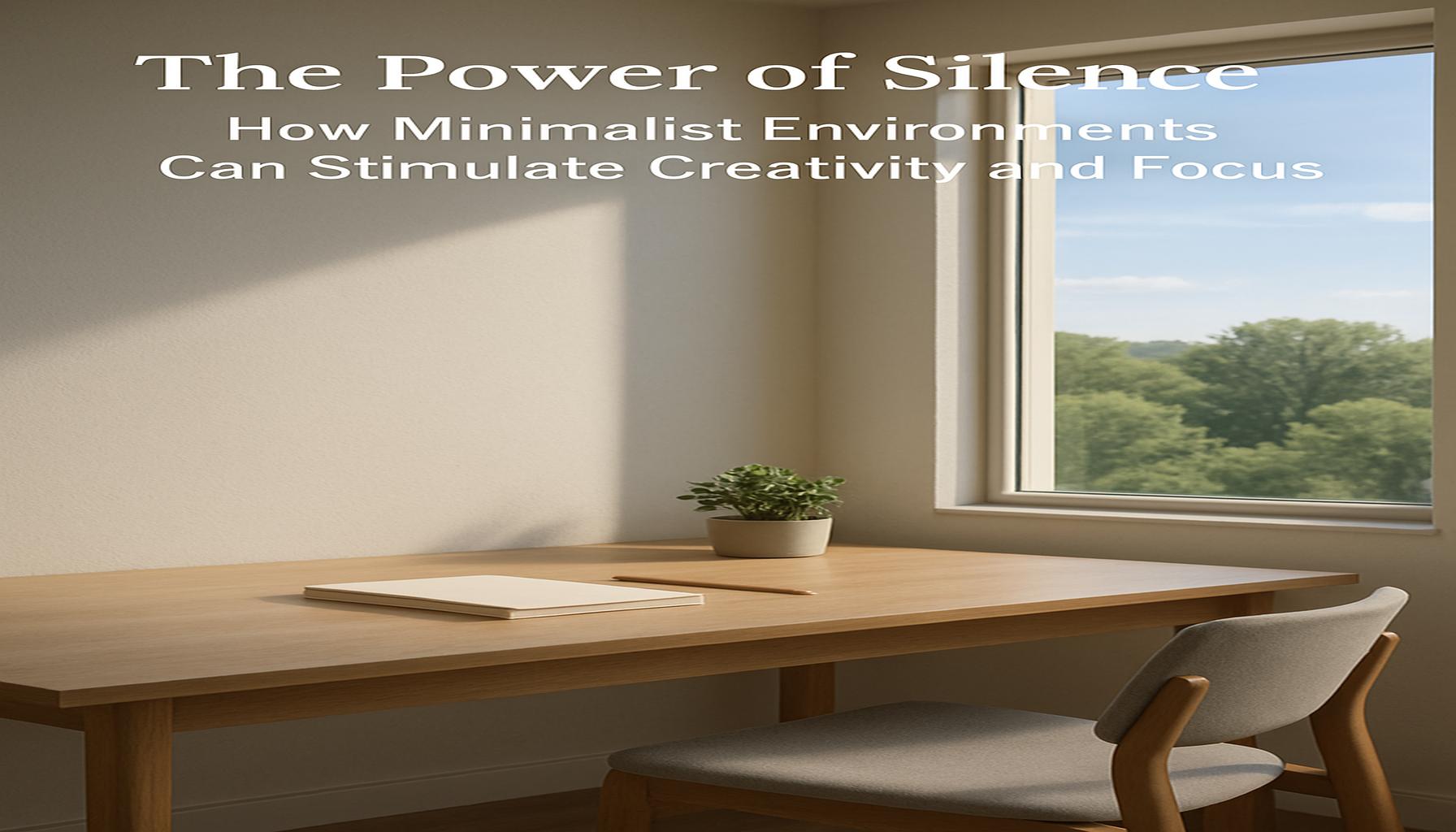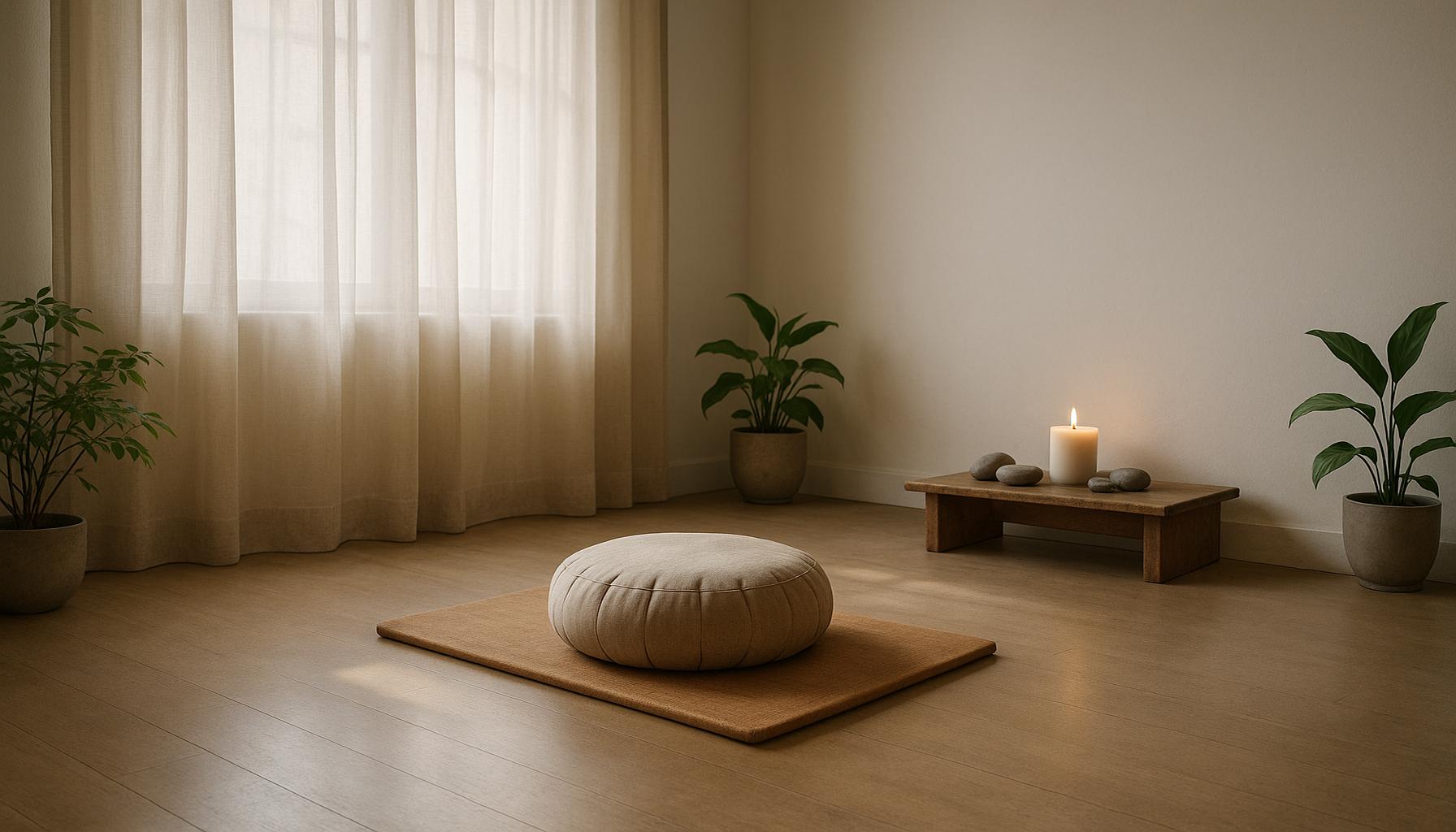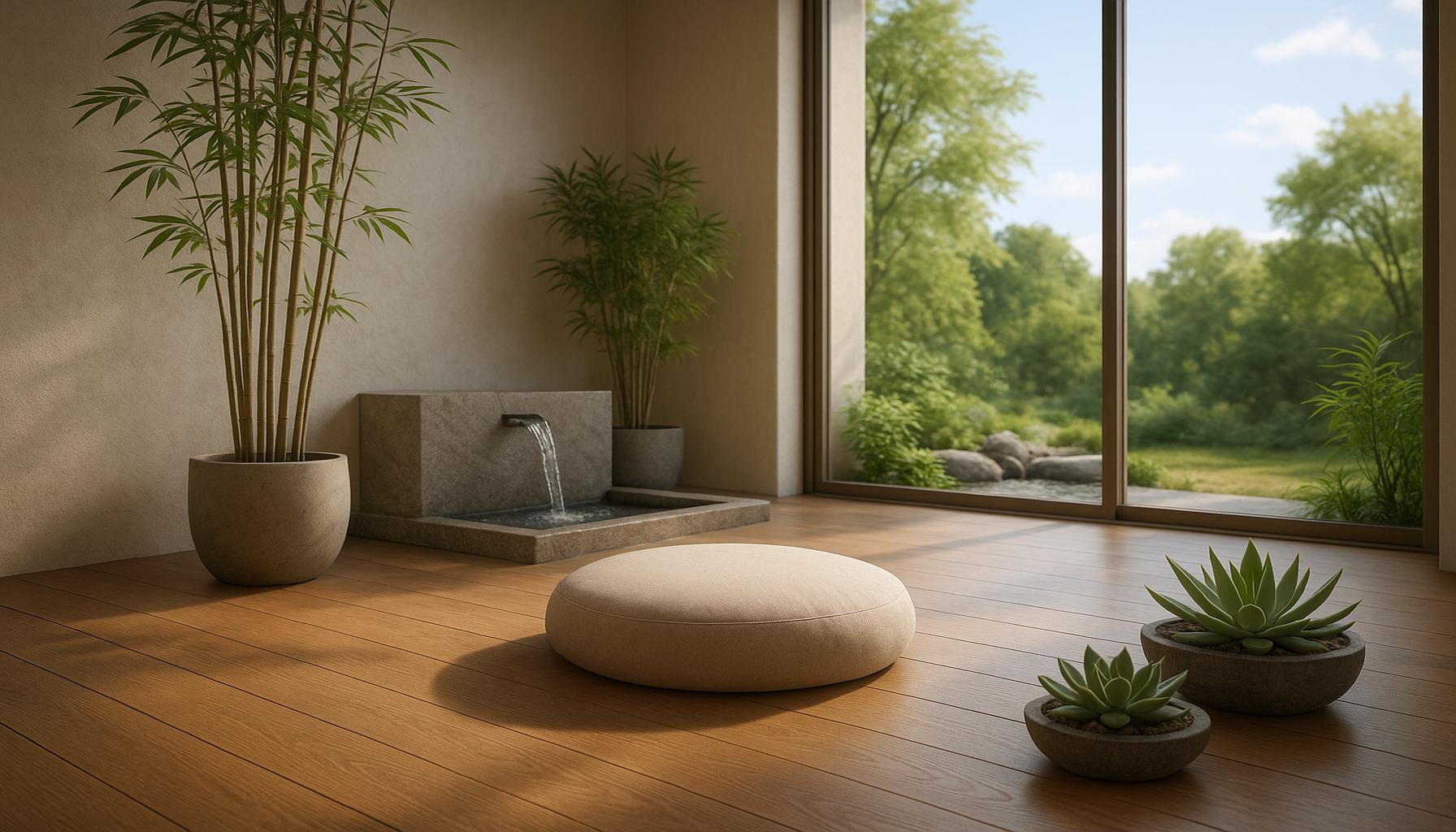Transforming Common Spaces into Concentration Sanctuaries: Minimalism in Home Decoration

Strategies for Transforming Your Living Space
In a world filled with constant notifications, traffic noise, and the hustle and bustle of daily life, finding a serene space to focus can feel like a daunting task. Many individuals are recognizing the importance of transforming their homes into concentration sanctuaries, where distractions fade away and creativity and productivity can thrive. One effective method to achieve this is through minimalism, which champions simplicity while maximizing function.
Implementing minimalist principles in home decoration offers a multitude of advantages that lead to a more peaceful atmosphere. The most notable benefits include:
- Reduced visual clutter that enhances mental clarity. A room free of excess items allows the mind to relax and concentrate more effectively.
- Increased functionality in shared spaces. With fewer items, it becomes easier to navigate and utilize areas for multitasking, whether it’s a dining table that doubles as a workspace or a living room that accommodates relaxation as well as creative endeavors.
- A calming atmosphere conducive to creativity and productivity. Environments designed with intention can invoke feelings of peace, allowing for better focus on tasks at hand.
The process of transitioning to a minimalist environment isn’t a matter of throwing everything away; it’s about thoughtfully simplifying your space. Those starting this journey can do so gradually, taking the time to evaluate what each item truly brings to their life.
Incorporating specific minimalist decor elements can greatly enhance the serenity of your environment. Consider the following:
- Neutral color palettes that foster a serene backdrop. Shades like soft whites, gentle beiges, or muted grays can evoke tranquility and provide a foundation for more accent colors.
- Multi-functional furniture that maximizes space. Opt for sleek, modern pieces like a bed with built-in storage or a coffee table that can expand to accommodate guests.
- Strategic use of natural light to improve mood and energy. Keep windows unobstructed; the right amount of sunlight can uplift one’s spirits while also reflecting off lighter surfaces to create an illusion of larger spaces.
As you consider transforming your common spaces into areas that are both functional and aesthetically pleasing, remember that the end goal transcends mere decoration. It’s about cultivating an environment that nurtures your ability to concentrate and thrive, enabling you to meet your goals, both personal and professional.
In this article, we will delve into practical tips and inspiring ideas that serve to guide you in this journey. From selecting the right colors to choosing furniture tailored to your needs, let us equip you with the tools to turn your home into a true sanctuary for focus and creativity.
DISCOVER MORE: Click here to simplify your online life
Embracing Minimalism: The Foundation for a Concentration Sanctuary
When it comes to transforming common spaces into concentration sanctuaries, the first step lies in embracing minimalism. This approach doesn’t merely advocate for fewer items but promotes a lifestyle that values quality over quantity. By intentionally selecting what remains in your living space, you cultivate an atmosphere that is both functional and peaceful. So, how can you effectively implement minimalist practices in your home?
Start by assessing your current belongings. It’s crucial to take a moment to reflect on what each item truly contributes to your life. This process can be eye-opening, often revealing how much what we own can overwhelm our space—and our minds. A simple question to ask yourself while decluttering is, “Does this add value to my daily life?” If the answer is no, it may be time to consider letting it go.
In addition to decluttering, the way we organize our spaces plays a significant role in maintaining a minimalist aesthetic. Here are some effective strategies:
- Create designated zones for specific tasks. For instance, design a quiet corner with a comfortable chair and adequate lighting for reading or meditation, while ensuring your workspace remains clutter-free with only the essentials at arms reach.
- Use storage solutions that minimize visible clutter. Consider opting for furniture pieces that double as storage units, such as ottomans or coffee tables with hidden compartments. This creates a cleaner look while maximizing functionality.
- Embrace open space wherever possible. Leave floors and surfaces as open as you can, allowing for a seamless flow through your home. This promotes a sense of calm and helps diminish distractions.
Furthermore, the choice of decor and furnishings is equally important in establishing a minimalist atmosphere. Seek out items that embody elegance and simplicity. Think about investing in art pieces that resonate with you but do not overcrowd your walls. A single, impactful painting or a few well-placed photographs can transform a room from bland to inspiring while maintaining that sense of openness that minimalism promotes.
Color choice is another essential element. A palette that leans toward soft and neutral tones allows spaces to breathe while creating a soothing backdrop. Incorporating natural elements such as wood, stone, or plants can add warmth and life without compromising on minimalism. Additionally, these organic touches can enhance your mood, fostering a clearer mindset—ideal for concentration.
As you embark on your journey to transform your living space, remember that minimalism isn’t a one-size-fits-all approach. Each individual’s needs and tastes vary; thus, what constitutes a concentration sanctuary for one may look different for another. By tailoring these principles to fit your unique lifestyle, you’ll lay the groundwork for a serene environment that not only promotes focus and creativity but also reflects your personal aesthetic.
| Category | Benefits |
|---|---|
| Reducing Clutter | Promotes a clear mind and enhances productivity. |
| Natural Light Utilization | Increases mood and energy levels, creating a vibrant atmosphere. |
| Color Palette Choices | Creates a calming environment, fostering focus and concentration. |
| Functional Furniture | Maximizes space and utility, contributing to better organization. |
To delve deeper into the concept of transforming common spaces, consider the profound impact of reducing clutter. A clean environment not only minimizes distractions but also enhances overall productivity, allowing individuals to focus on their tasks more effectively. Integrating natural light into these spaces plays an equally crucial role. It energizes rooms, creating a warm atmosphere that keeps spirits high while concentrating on essential work. Moreover, selecting a soothing color palette can significantly influence one’s mental state; shades like soft blues and greens are known for their calming effects, which encourage an encouraging atmosphere for focus. Additionally, investing in functional furniture promotes an organized layout, ensuring that every item has purpose and a designated spot, which further underscores the benefits of minimalism in home decoration. Embracing these principles can lead to a remarkable transformation within your common spaces, turning them into true concentration sanctuaries. As you explore these elements, you’ll find that minimalism is more than just a decor style; it’s a lifestyle choice promoting well-being and productivity.
DISCOVER MORE: Click here to delve into the art of simplifying
Functional Decor: Merging Aesthetics with Purpose
Once you have streamlined your belongings and established designated zones within your home, the next step in your transformation of common spaces into concentration sanctuaries is to focus on functional decor. This involves selecting elements that enhance the atmosphere while serving a practical purpose. Minimalism emphasizes the significance of choosing pieces that fulfill both roles—beauty and utility.
Incorporate multi-functional furniture as a core principle. For instance, a sleek sofa bed can serve dual purposes—acting as a comfortable seating area during the day and converting into a resting space at night. Similarly, a minimalist desk can double as a dining table, inviting creativity during the workday and community for mealtimes. This not only saves space but also limits clutter, allowing for more room to breathe and concentrate.
Another effective strategy is to engage in the thoughtful selection of lighting solutions. Lighting can dramatically influence mood and focus levels. Opt for adjustable floor and table lamps with warm, dimmable features to cater to various activities across your spaces. Brighter, cooler light is ideal for cognitive tasks, while softer hues create a relaxing atmosphere for unwinding. Consider also the role of natural light; arranging furniture to maximize exposure will infuse your areas with energy and clarity.
When it comes to textiles and materials, choose high-quality, sustainable options that resonate with minimalism’s ethos. Natural fibers, such as cotton or linen, are not only eco-friendly but also contribute to a serene environment. Incorporating area rugs can define zones calmly, while still maintaining a light and airy feel. Opt for solid colors or subtle patterns that harmonize with your minimalistic palette, avoiding overwhelming visuals.
The Role of Sound and Scent in Building Focus
Creating a concentration sanctuary transcends visual components; it also involves auditory and olfactory elements. Isolation from disruptive noise can significantly boost focus, making a sound strategy pivotal in your transformation process. One option is to use soft fabric wall hangings or acoustic panels that visually align with your decor while absorbing unwanted sound waves.
Incorporating technology can offer additional avenues. Noise-canceling headphones or soothing sound machines playing white noise or nature sounds can transform a chaotic environment into one more conducive for concentration. Alternatively, consider investing in a sound system that gently blends ambient music with natural sounds, crafting an immersive experience that invites deeper focus.
On the olfactory front, infusing your sanctuary with calming scents can naturally enhance concentration and relaxation. Use essential oil diffusers or scented candles featuring lavender, eucalyptus, or sandalwood to create a tranquil environment. Not only does this reflect a commitment to self-care, but pleasant aromas can also heighten your mood, making it easier to concentrate on tasks at hand.
As you explore these elements of functional decor and sensory enhancement, it becomes evident that transforming common spaces into concentration sanctuaries through minimalism involves a holistic approach. By integrating careful design choices, multifaceted furnishings, and attentive sensory considerations, you have the ability to shape an environment that nurtures focus and creativity—one that mirrors your aspirations and enriches your daily experience.
DISCOVER MORE: Click here to enhance your daily efficiency
Conclusion: The Art of Concentration in Minimalist Design
In the quest to transform common spaces into concentration sanctuaries, minimalism provides a refreshing framework that fosters both tranquility and productivity. By carefully curating your environment—eliminating excess clutter, selecting functional decor, and enhancing sensory experiences—you can create a harmonious space that supports your focus and creativity.
The journey begins with intentionality. As you streamline your belongings and define distinct areas for various activities, your home evolves into a deliberate reflection of your needs and aspirations. The introduction of multi-functional furniture not only maximizes space but also encourages versatility—allowing you to seamlessly shift from work to relaxation without the oppressive burden of disarray. Coupled with well-thought-out lighting solutions and sensory elements like sound and scent, your common spaces can become personalized havens designed specifically for concentration.
Moreover, this minimalist approach goes beyond aesthetics; it emphasizes well-being and mental clarity. The serene environment you cultivate not only invites productivity but also nourishes your overall lifestyle, making it an essential consideration in today’s fast-paced world. As you embrace these principles, you redefine not only your home but also your relationship with the tasks you undertake.
In conclusion, the art of transforming your common spaces into concentration sanctuaries through minimalism is an empowering process. By taking these actionable steps and remaining committed to a clearer, more functional living environment, you’ll uncover new levels of mindfulness and focus that translate into greater accomplishments in every aspect of your life.


